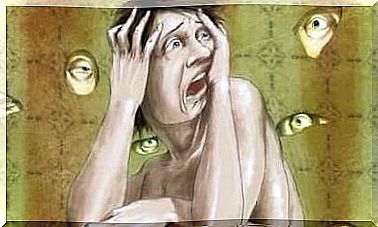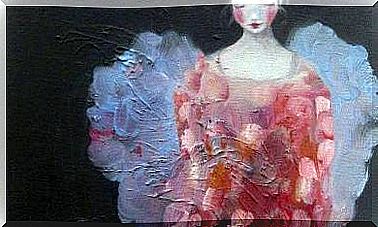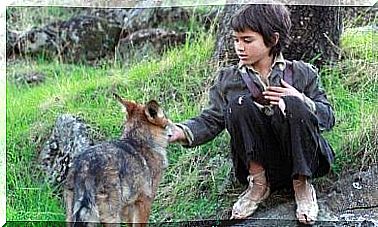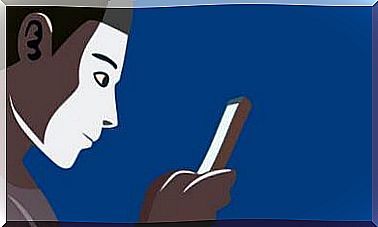That’s Why The Wolf In The Little Red Riding Hood Is Not Bad

Our world has set the pace a lot in recent decades. It can make it hard to stop and think about what to do and say to your children. The Wolf in The Little Red Riding Hood can help us get a different view on this.
How many times have you said or heard someone say something like, “Peter, do not hit your sister. You are so naughty”. That definitely sounds familiar to me. I have heard it often and even said it myself. But what exactly are we saying?
Of course, it’s not okay for Peter to hit his sister, but to say he’s naughty ‘might be taking it a little too far. I think one of the most important things we can try to pay more attention to is to separate the action and the child’s behavior from who the child is.
You will need to be able to separate the action and the person and be careful about giving labels.

The danger of stickers and why the wolf in The Little Red Riding Hood is not naughty
I’m sure if Peter’s father said that to him, it’s because he’s done something wrong and he should not behave that way.
But here’s the dilemma. The inappropriate part of it is the action itself, not Peter. If you constantly mix your child’s actions and behaviors with who they are, you will probably end up with low self-esteem over time, without realizing it. Saying ” You are thoughtless” (personality) and ” It was thoughtless” (behavior) is far from the same.
That’s part of the reason why I’ve always found it interesting that children would say that the wolf in The Little Red Riding Hood is naughty. We only give the wolf that personality (“bad”) because it wants to eat the little red riding hood.
The conclusion is simple: if it wants to eat her, it’s because it’s naughty. Only bad people would do such a thing.
After reading and hearing so many stories about wolves, such as The Little Red Riding Hood, The Three Little Pigs, The Wolf and the Seven Goats, and Peter and the Wolf, we have decided that they are naughty because they want to hurt the main characters. We therefore label them all as “bad”, although this is not necessarily the case.
Of course, the wolf is not naughty. The wolf wants to eat The Little Red Riding Hood because it’s hungry, not because it’s naughty. Explaining it to a child would help them have more realistic, healthy, and positive expectations of the world. Poor wolves, look what a bad reputation they have! Try changing the way you describe these characters.
The art of describing behavior
Luis Cencillo was a philosopher and psychologist who liked to apply a concept that I think is very practical: ” resemantization”. The root of this word comes from “semantics”, the linguistic study of meaning. So this means changing your description of something to make it more flexible.
For example, instead of saying that a child is weird and evasive, you could resemantize (re-label) them as shy. Think about how hard it is to get rid of that sticker once you put it there! It is, like psychologist Alberto Soler, says. It’s easy to put a sticker on something or someone, but it’s much harder to take it off again.
To explain it better, Soler likes to use the metaphor of stickers for jars. Once you have noticed your child (nervous, naughty, clever, helpful, restless, etc.), it will be difficult to remove that mark again, even if you see something that goes against it. The point is: Be careful with the stickers you give people, especially children.
We tend to act in a way that suits the brands or judgments we show to the outside world. We also tend to accept stickers. Henry Ford had a good quote about this: “Whatever you think you can, or you think you can not, you are right”.

Another useful story
One story I love to use to explain the negative side of accepting stickers or a role is “Galtons Walk”. Francis Galton was Charles Darwin’s cousin. One morning he was walking in the park thinking he was the worst person in the whole world. He did not talk to anyone. He just stayed in his head thinking about how awful he was.
How do you think Galton felt about the people he met on his way on the walk? Most of the people he passed would move away from him and look at him in fear. Surprising, right? That’s the power of stickers.
I want to return to the explanation of why the wolf in The Little Red Riding Hood is not naughty. In connection with this , I am convinced that there is no such thing as a bad child. But you will still hear people say that “X is bad” all the time. There is always a reason behind problematic behavior.
I am not saying that one should justify the action (far from it). I just think it’s important to understand why a child behaves a certain way. The best thing to do with your child and students is to describe behaviors instead of qualifying them or putting labels on them.
Take a moment to think about the explanations and stickers you use for your children and the consequences they may have. The way you look at things can help make them more flexible, healthy and open.









